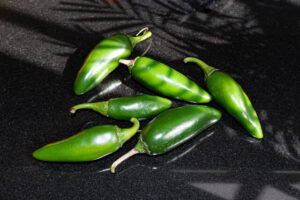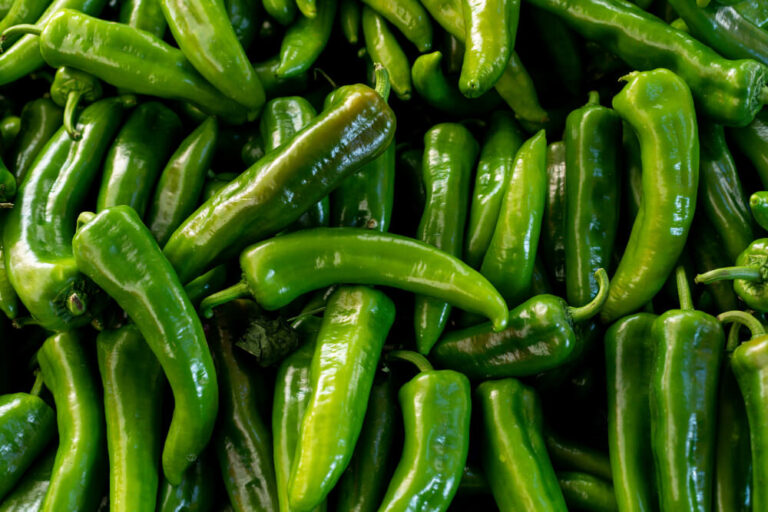The jalapeno shortage in 2025 has surprised the world, leaving consumers and businesses scrambling to adapt to this sudden change. The scarcity of this popular chili pepper has had a significant impact on the food industry and those who love their dishes with a kick. In this blog post, we will explore the reasons behind the jalapeno shortage, its consequences, and how it is affecting both consumers and businesses alike.
About Jalapeno
Jalapenos are a type of chili pepper that originated in Mexico and have become a staple in many cuisines worldwide. Known for their moderate heat and distinctive flavor, jalapenos are commonly used in dishes such as nachos, salsa, and jalapeno poppers.
They are also a popular ingredient in hot sauces and other spicy condiments. Jalapenos are typically harvested when green, although they can also be found in their ripe red form, which is slightly sweeter and hotter.
Is There a Jalapeno Shortage in 2025?
Yes, there is indeed a jalapeno shortage in 2025. This unexpected scarcity has left many people wondering how it happened and what the future holds for this beloved chili pepper. The shortage has led to increased prices and decreased availability, making it difficult for consumers and businesses to find the jalapenos they need for their favorite dishes and products.
Why is There a Jalapeno Shortage?
The jalapeno shortage can be attributed to several factors, including climate change, pests, and disease. Unusual weather patterns and extreme temperatures have caused problems for jalapeno farmers, leading to reduced crop yields. Additionally, increased pests and diseases targeting chili peppers has further contributed to the decline in jalapeno production.
Another factor contributing to the jalapeno shortage is the increasing global demand for spicy foods. This growing appetite for heat has put additional pressure on jalapeno farmers, leading to a strain on the already limited supply.
How the Jalapeño Shortage Is Affecting Consumers and Businesses
The jalapeno shortage in 2025 has had a significant impact on both consumers and businesses. For consumers, the scarcity of jalapenos has led to higher prices and fewer options when shopping for their favorite spicy foods. Some individuals have even resorted to growing their jalapenos at home in an attempt to keep their kitchens stocked with this beloved ingredient.
Businesses, particularly those in the food industry, have also felt the effects of the jalapeno shortage. Restaurants and food manufacturers that rely on jalapenos as a key ingredient have been forced to adapt by either raising prices, altering recipes, or finding alternative sources for their spice needs. Some businesses have even had to remove jalapeno-based dishes from their menus or discontinue jalapeno-infused products due to the scarcity.

Regional Impact of the Shortage
First on our list is the regional impact of the jalapeno shortage. Primarily, areas with a high demand for jalapenos, like Texas and California, are feeling the heat. Not only are restaurants and grocery stores running low on supplies, but local farmers are also feeling the pinch. The shortage has led to an increase in prices, affecting not just consumers, but businesses too.
However, the shortage isn’t limited to the US. Mexico, the world’s largest producer of jalapenos, is also experiencing a decline in output. Several factors are at play here, including climate change, diseases, and pests. This shortage is disrupting the global supply chain, impacting both large-scale industries and small-scale farmers.
When Will Jalapeño Supplies Normalize?
As for when we can expect jalapeno supplies to normalize, it’s hard to say. The shortage is largely due to unfavorable weather conditions and disease outbreaks, which are unpredictable. However, experts suggest that it may take at least a year or two for production to stabilize. It’s a waiting game at this point.
What Can Consumers Do During the Shortage?
Now, the big question – what can you do during the jalapeno shortage? Well, the first step is to stay informed. Keep an eye on news updates and be aware of the situation. Secondly, consider using alternatives.
Anaheim peppers and serrano peppers can offer a similar kick to your dishes. Lastly, if you have the means, try growing your own jalapenos. Home gardening can be a fun and rewarding experience, and it ensures you have a personal supply of these fiery fruits.
Conclusion
The jalapeno shortage of 2025 has certainly shaken up the food industry and highlighted the challenges of relying on a single crop. As the world faces the ongoing effects of climate change and increasing demand for spicy foods, it’s crucial for both consumers and businesses to adapt and find new ways to satisfy their cravings for heat. In the meantime, let us appreciate the jalapenos we have and savor their fiery flavor while we still can.
FAQs- Jalapeno Shortage
Are jalapeños more expensive right now?
Yes, many grocery stores and distributors have reported higher prices due to limited supply and increased demand. This affects both fresh jalapeños and processed products like pickled jalapeños or hot sauces.
Who produces the most jalapeños?
Mexico is the world’s largest producer of jalapeños. The country’s warm climate and long growing season make it ideal for cultivating chili peppers, including jalapeños, which are a staple in Mexican cuisine. Major jalapeño-producing states in Mexico include Chihuahua, Sinaloa, and Veracruz.
Is the shortage affecting restaurants and food manufacturers?
Yes, many restaurants and food brands that rely on jalapeños have had to adjust recipes, reduce portion sizes, or temporarily remove spicy items from menus.
Is this the first time there’s been a jalapeño shortage?
No, smaller shortages have occurred in the past due to weather or transportation issues, but the current one is more widespread and severe due to multiple overlapping factors.
Also Read:


